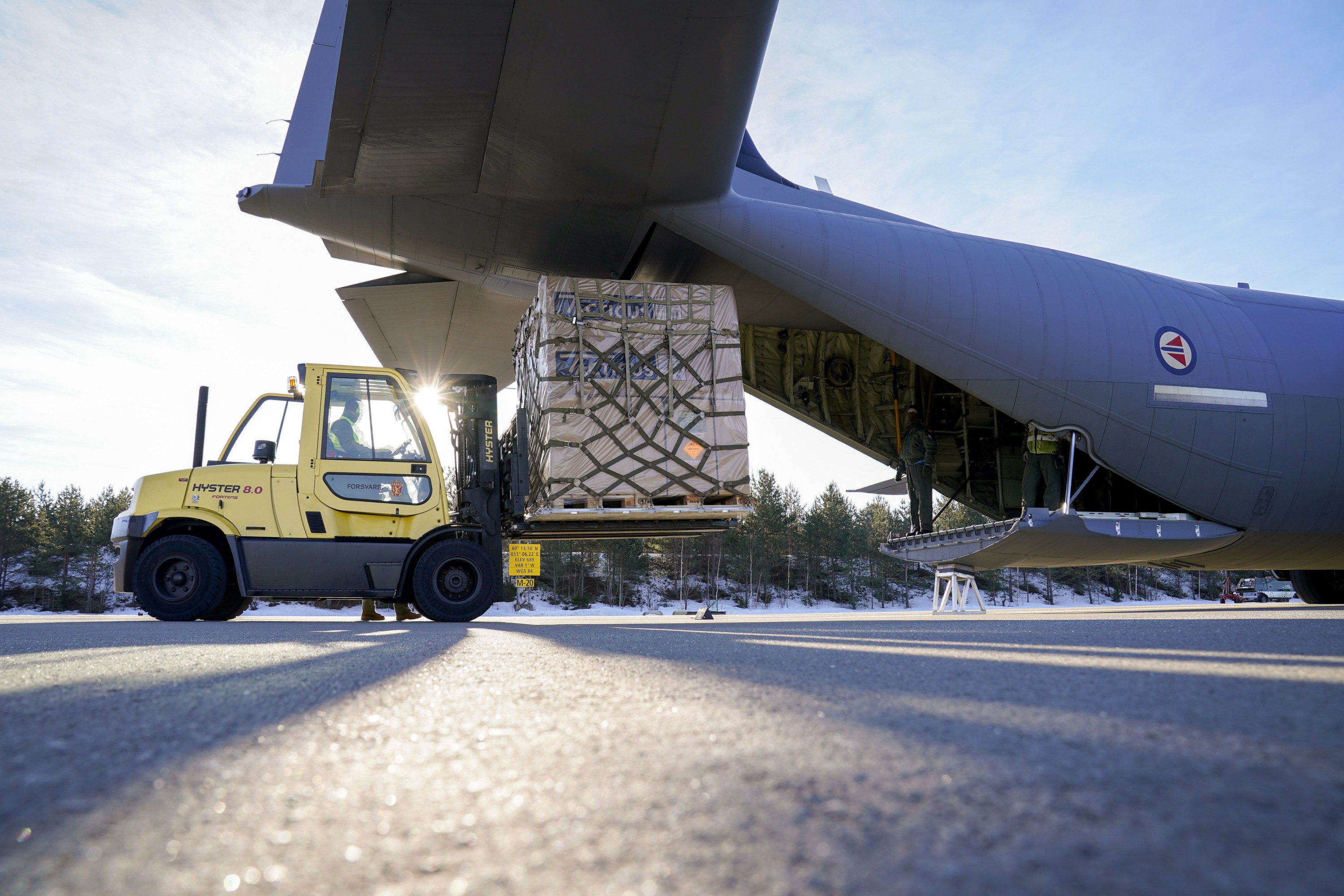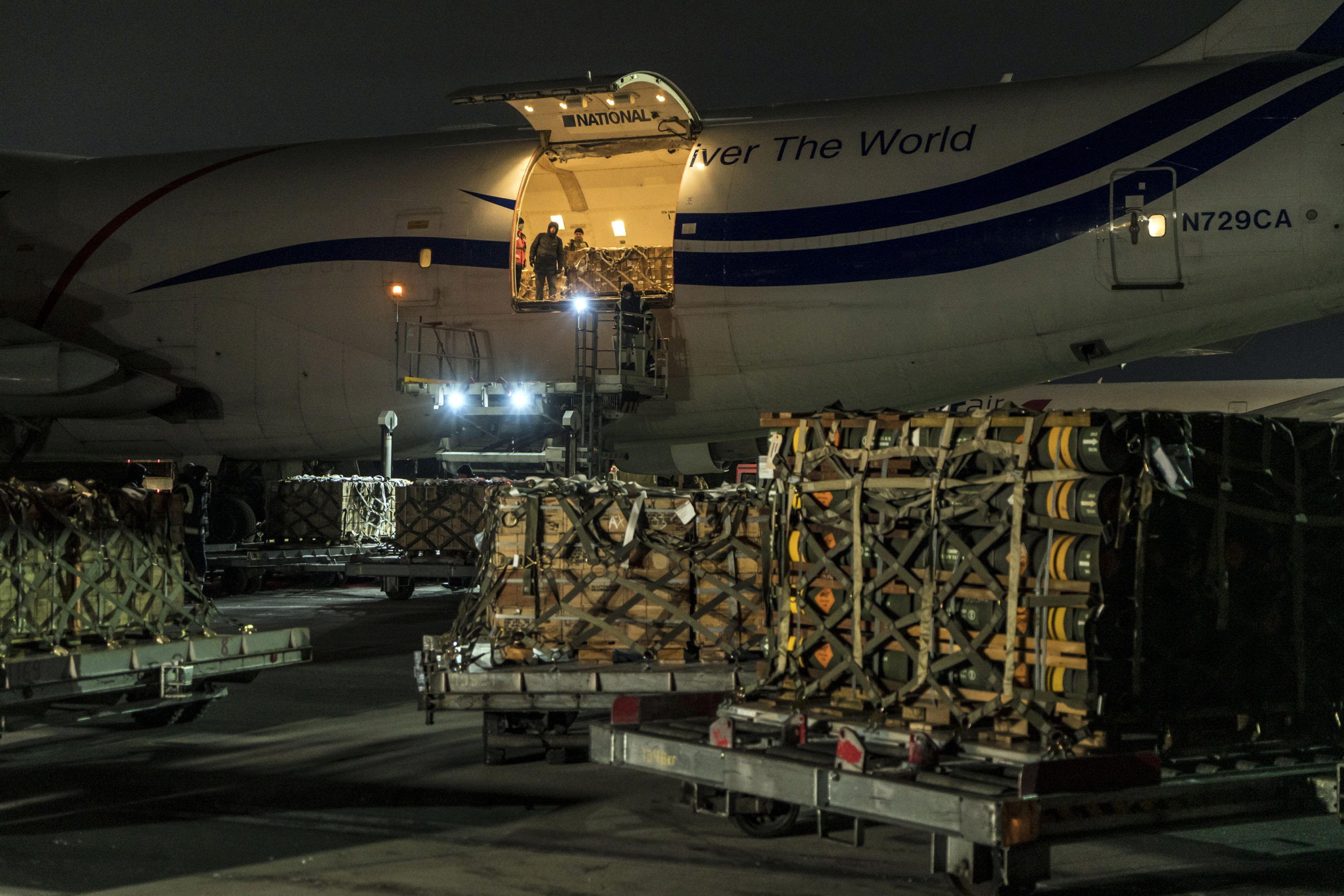Nato countries pour weapons into Ukraine, risking conflict with Russia
Sign up now: Get ST's newsletters delivered to your inbox

Norwegian M72 anti-tank missiles are loaded on a plane for delivery to Ukraine in Oslo, Norway, on March 3, 2022.
PHOTO: EPA-EFE
Follow topic:
BRUSSELS (NYTIMES) - The Dutch are sending rocket launchers for air defence. The Estonians are sending Javelin anti-tank missiles. The Poles and the Latvians are sending Stinger surface-to-air missiles. The Czechs are sending machine guns, sniper rifles, pistols and ammunition.
Even formerly neutral countries like Sweden and Finland are sending weapons. And Germany, long allergic to sending weapons into conflict zones, is sending Stingers as well as other shoulder-launched rockets.
In all, about 20 countries - most members of Nato and the European Union, but not all - are funnelling arms into Ukraine to fight off Russian invaders and arm an insurgency, if the war comes to that.
At the same time, Nato is moving military equipment and as many as 22,000 more troops into member states bordering Russia and Belarus, to reassure them and enhance deterrence.
The Russian invasion of Ukraine has brought European countries together, minds concentrated by the larger threat to European security presented by the Russia of President Vladimir Putin.
"European security and defence has evolved more in the last six days than in the last two decades," Ursula von der Leyen, the president of the European Union's executive arm, asserted in a speech to the European Parliament on Tuesday (March 1). Brussels has moved to "Europeanise" the efforts of member states to aid Ukraine with weapons and money and put down a marker for the bloc as a significant military actor.
But whether European weaponry will continue to reach the Ukrainian battlefield in time to make a difference is far from certain. However proud Brussels is of its effort, it is a strategy that risks encouraging a wider war and possible retaliation from Putin. The rush of lethal military aid into Ukraine from Poland, a member of Nato, aims, after all, to kill Russian soldiers.
Putin already sees Nato as committed to threaten or even destroy Russia through its support for Ukraine, as he has repeated in his recent speeches, even as he has raised the nuclear alert of his own forces to warn Europe and the United States of the risks of interference.
World wars have started over smaller conflicts, and the proximity of the war to Nato allies carries the danger that it could draw in other parties in unexpected ways.
Jens Stoltenberg, the Nato secretary-general, hit his constant themes again Tuesday as he visited a Polish air base. "Putin's war affects us all and Nato allies will always stand together to defend and protect each other," he said. "Our commitment to Article 5, our collective defence clause, is ironclad."
"There must be no space for miscalculation or misunderstanding," Stoltenberg said last week. "We will do what it takes to defend every inch of Nato territory."
But for now the fight is in Ukraine, and while Nato and the EU have made it clear that their soldiers would not fight Russia there, they are actively engaged in helping the Ukrainians to defend themselves.
Western weaponry has been entering Ukraine in relatively large but undisclosed amounts for the past several days. If it can be deployed quickly, it will have impact.

Speed is of the essence as the Russian invasion of Ukraine proceeds and while Ukraine's border with Poland remains open. Russian troops are trying to surround cities and cut off the bulk of the Ukrainian army east of the Dnieper River, which would make resupply much more difficult.
While 21 of the 27 EU countries are also members of Nato, the effort to move equipment and weapons rapidly into Ukraine from Poland is being carried out by individual countries and is not formally either a Nato or EU operation.
The French say that the EU's military staff is trying to coordinate the push. Britain and the US are doing the same, setting up something called, deliberately blandly and neutrally, the International Donors Coordination Centre. It is doubtful that Putin will be fooled by the name.
In fact, even if no Nato soldier ever crosses into Ukraine, and even if convoys of materiel are driven to the border by non-uniformed personnel or contractors in plain trucks, the European arms supplies are likely to be seen in Moscow as a not-so-disguised intervention by Nato.
Supplying Ukraine to allow the resistance to bloody Russia's nose is a good idea, "but the more it ramps up you wonder how Putin will respond," said Malcolm Chalmers, deputy director of the Royal United Services Institute, a defence research institute. "What happens if he attacks on the other side of the border? We pursue terrorists across borders, why not him?"
Then there is always the possibility of Russian aircraft straying into Nato airspace as they try to interdict convoys or chase Ukrainian planes. Something similar happened the only time a Nato country shot down a Russian Su-24 fighter jet, near the Turkish-Syrian border in 2015.
More supplies of ground-to-air missiles like Stingers and antitank weapons like the Javelin are crucial, as is secure communications equipment, so the Ukrainian government can continue to be in contact with its military and its people if the Russians take down the Internet, said Douglas Lute, a former lieutenant-general and US ambassador to Nato.
"On Nato territory, we should be the Pakistan," he said, stockpiling materiel in Poland and organising supply lines to the Ukrainians as Pakistan supplied the Taliban in Afghanistan.
The European fund being used to buy lethal arms is called the European Peace Facility.
The fund is two years old and is intended, at least, to prevent conflict and strengthen international security. It has a financial ceiling of €5.7 billion (S$8.6 billion) for the seven-year budget of 2021 to 2027. If Ukraine needs more money, the EU official said, it can be provided.
According to Nato, Belgium, Canada, the Czech Republic, Estonia, France, Germany, Greece, Latvia, Lithuania, the Netherlands, Poland, Portugal, Romania, Slovakia, Slovenia, Britain and the US have already sent or are approving significant deliveries of military equipment to Ukraine, as well as millions of dollars, while other member states are providing humanitarian aid and welcoming refugees.

